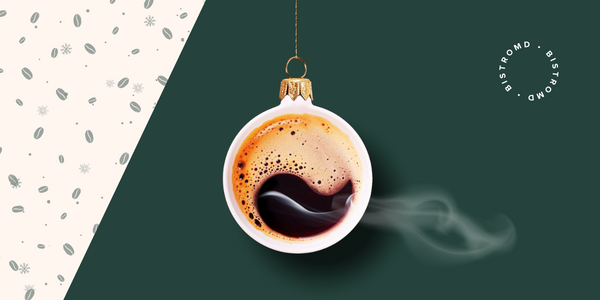
Wondering what fruits are good for diabetics? While some rank higher on the glycemic index, most fruits can fit easily within a healthy diabetic diet.
Varieties with fiber truly stand out, but combining fiber-deficient fruits with protein or healthy fats can help. Keep reading for the top five best fruits for diabetics, including fruits for diabetes that won’t spike blood sugar.
Fruits for Diabetes: What to Consider
For people with diabetes, understanding a certain food's impact on blood sugar is crucial. Raising blood sugar (blood glucose levels) too high can harm the health of someone with diabetes.
A meal plan complete with low glycemic index foods is key to managing diabetes.
Glycemic Index of Fruit
The glycemic index (GI) is used as a way to measure foods and their effect on blood sugar.It’s companion measure, the glycemic load (GL), takes portion size or serving size into account. Both measures can be used together to find fruits with a small impact on blood sugar.
In both cases, a lower number is "better" because it causes a smaller rise in blood sugar. A GI under 55 is considered low, while a GL under 10 is low.
Fruits, in particular, contain natural sugars. Even with these sweet components, many fruits have a medium GI or low GI, making them a healthful addition to diets for people with type 1 or 2 diabetes.
Fiber In Fruit
To make a fruity pick more diabetes-friendly, try a variety with plenty of fiber. Fiber helps to slow the digestive process, meaning a fiber-rich fruit offers a steady stream of natural sugars to the blood—instead of a sudden spike.
If your favorite fruit doesn't naturally contain much fiber, pair it with fiber or other blood sugar stabilizers like healthy fat or protein.
Portion Sizes
Also, instead of eating 1-2 cups of fruit in one sitting—which will likely raise blood sugar—spread fruit consumption over the day for a more balanced approach.
Paying attention to average portion size and consuming more blood-sugar-friendly forms can help. For example, a cup of mashed banana is generally more carb-heavy than one medium-sized banana, which is a more natural serving size and form suitable for eating.
Best Fruits for Diabetics
Curious exactly which fruits are considered healthy for diabetics? Here are the top foods and food groups known for maintaining stable blood sugar levels.
Apples and Pears
Although apples and pears are sweet to the taste, they have a low GI rating. Interestingly, some baking recipes even use unsweetened applesauce as a sugar substitute. Apples and pears also pair well with spices that add a hint of sweetness, such as cinnamon and nutmeg.
As a note, most fiber in an apple or pear exists in the skin. Eating these fruits with the peel can contribute fiber to your diet and help keep blood sugar levels more stable than if you were to eat them without the outer layer.
Berries
Except for cranberries, most berries rank low on the glycemic index. Strawberries, blueberries, blackberries, and raspberries are among popular favorites.
To further lower their impact on blood sugar, pair berries with protein-rich dairy! Try them with nut and seed-based granolas in a parfait, alongside cheese slices, or atop cottage cheese.
Citrus
Already known for its unique acidic flavor, citrus is an exceptional fruit group in terms of natural sugars, too. Lemons and limes rank around 20 on the GI, while grapefruits and oranges sit around 45 on the GI scale.
Lemon and lime are commonly used to flavor poultry and fish, while grapefruit and oranges are enjoyed on their own!
Stone Fruits
Often underestimated, stone fruits are a fruit group containing many interesting picks. This category hosts apricots, cherries, plums, prunes, and more.
Although peaches are a popular stone fruit, they rank medium to high on the GI, so limiting your intake of this specific fruit may be best.
Tart cherry juice, in particular, has been studied for its ability to improve metabolic risk factors. In other words, tart cherry products may be especially helpful in lowering fasting blood sugar, and help improve other markers of health.
Plums and prunes, which are dried plums, are known for benefiting digestion. However, they are also rich in potassium, a crucial nutrient in managing high blood pressure. In other words, these fruits can be a great addition to your diet if you manage blood sugar and blood pressure.
Some Tropical Fruits
Many tropical fruits are surprisingly suitable for diabetics. Fruits like guava, papaya, and mangoes rank lower on the glycemic index. They taste great on their own, but also make a delicious companion for other foods.
From the same family as figs, jackfruit is also considered tropical. Thanks to its subtly sweet flavor, it can be uniquely prepared to create a vegan substitute for pulled pork or BBQ.
Remember that not all tropical or subtropical fruits fall low on the glycemic index. For example, kiwis, coconuts, and pineapples have medium or high GIs.
Fruits to Watch Out For
Although most fruits can be eaten as part of a balanced diet, some fruits are higher in natural sugars than others.
Ripened Fruits
Ripened fruits—such as bananas and pears—fall higher on the glycemic index than their under-ripe counterparts. Pairing these fruits with a protein or fiber source may help lower their immediate impact on blood sugar.
Fruits Without Peels
In addition, fruits eaten without peels often fall higher on the glycemic index. Since a considerable amount of fiber is usually contained in the outer layer or peel of a fruit, removing this layer can influence how a fruit impacts blood sugar levels.
Dried Fruits
Compared to fresh fruits, dried fruits and fruit juices often have more sugar. This is due to added sugars, which you’ll want to check the label for. As a general rule, it’s smart to keep the amount of added sugars as low as possible.
Canned Fruits
Also, it's best to avoid fruits canned in syrups and choose options canned in their own juices or water. Syrups can contain added sugars, which can add unwanted sugars to a snack or meal.
Fruits for Diabetes: Final Bites
If managing diabetes, eating fruit with a lower glycemic index ranking is wise. However, this doesn't mean you have to compromise on flavor—many delicious stone fruits, tropical fruits, and berries are included in this category.
To help you make healthful choices for balanced blood sugar, focus on portion control, fiber content, and pairing with healthy fat and protein. Also follow the guidance of your personal healthcare providers.






